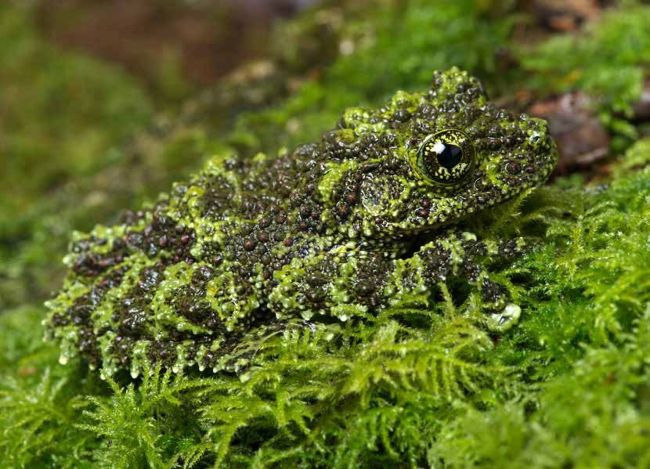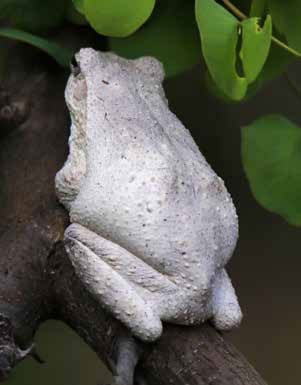Out of Africa
A case of concealment
Paul Donovan looks at the subject of camouflage in amphibians, and why it is both well-developed and diverse in this group.

A Vietnamese mossy frog (Theloderma corticale).
Photo courtesy davemhuntphotography
What is camouflage?
There are various ways in which camouflage can be defined. In the broadest sense, it is the ability of an animal to hide itself from potential predators. That being said, of course, it can also serve to assist the animal in ambushing its own quarry.
There is little doubt when looking at certain amphibians (although there are literally some quite glaring exceptions of course, such as various dart frogs), they are masters of disguise; possibly more so than snakes and lizards, but not quite up there with invertebrates. In their natural environment, as I have found on numerous occasions, some frogs can be staring you in the face and you just don’t see them. That is, until they move, always assuming that they have reason to do so.
Several years ago here in Botswana, I remember finding a grey or foam nest frog (Chiromantis xerampelina) on an old white cement plant pot in the garden. I watched this individual for several days, and took numerous photos of it. It appeared not to move at all. Eventually, temptation got the better of me, and I poked it because I assumed it to be dead. It was only then that it finally moved.
This was interesting, because I’d watched birds settle on the pot right next to it, and it would still remain motionless. It knew that even though it was in a relatively exposed position, its colouration and ability to remain absolutely still were critical for its protection.
Camouflage and range
The evolution of camouflage has certainly played a key role in helping frogs to diversify into the varied range of ecosystems where they are to be found today. Some exhibit the lush greenness of the surrounding foliage, while others adopt a more subdued approach, relying on shades of brown.
Certain species may show mottling, stripes or blotches on their bodies, while of course, there are brightly coloured species too, with this conspicuous colouration serving a different purpose, as explained in detail in my article “Why are amphibians so colourful” which appeared in issue 127.

The colouration of the grey foam nest tree frog is whitish when it is resting.
Photo courtesy Sprocky/
www.shutterstock.com Certain amphibians have taken camouflage to an even more complicated level, by developing fleshy extensions or protrusions on various parts of their body so they can blend into their surroundings more effectively. These typically break up uniform edges such as the legs or head, to give the amphibian a less identifiable shape. Combine this with the fact that many amphibians can remain motionless for considerable lengths of time, and so it is no wonder that they can simply appear to vanish into the background of their surroundings.